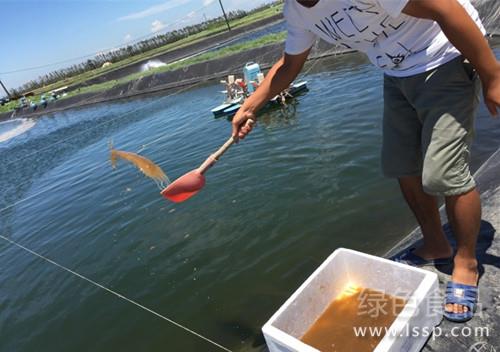Prevention and treatment of respiratory distress syndrome in calves with complex causes such as premature hypoxia
Respiratory distress syndrome in newborn calves is characterized by progressive dyspnea, purplish mouth and nose, and respiratory failure shortly after birth (within 6 hours). It is more common in preterm calves and cesarean section calves. Newborn calves with gestational calves are more likely to occur. It is mainly related to preterm delivery, caesarean section, hypoxia and acidosis, with high morbidity and mortality. Because of the complicated etiology, comprehensive measures should be taken to rescue the disease so as to minimize the loss.

Calf
Pay attention to keep warm and give oxygen in time: the calf needs a good environment and suitable temperature (18 ℃ ~ 21 ℃) because of its imperfect development, poor adaptation to the outside world, low resistance, disease, hypoxia or acidosis, and even worse vitality. And clean the mucus that blocks the calf's mouth and nose with washed hands as soon as possible, keep the respiratory tract unobstructed, and give vapor inhalation to reduce the viscosity of respiratory secretions.
Correcting acidosis: correcting acidosis is an effective means to relieve bovine acidosis, which can not only solve the harm of acidosis to cattle, but also dilate pulmonary blood vessels, improve pulmonary perfusion and increase the oxygen carrying capacity of hemoglobin. Methods: use 5% sodium bicarbonate 10 ml / kg each time, add 10% glucose 250 ml, intravenous injection, can improve carbon dioxide binding capacity. If necessary, you can first take half of the slow intravenous injection, the rest of the liquid, and then intravenous drip.
Control of heart failure: it can be used as chancre, which can stimulate the myocardium, has little toxicity and accumulation, and is suitable for first aid of acute heart failure, collapse and other diseases. The dosage of Gancre injection is 5 ml / time, once a day, intravenous injection should be slow, preferably in combination with glucose solution, but it is not easy to use for a long time, digitalis injection should be used after the condition is improved.
Prevention of brain edema: control heart failure in calves, using 20% mannitol 5-10 ml / kg, once or twice a day. Sorbitol can also be used in 8ml / kg, rapid intravenous drip, usually in 15-30 minutes. If necessary, it can be repeated every 3-6 hours. At the same time, it is used alternately with diuretic solution. When the head temperature is high and needs to be cooled, use ice water towel to cover the calf's head and use it until the calf is cooled.
Control of hyperkalemia: the elevation of serum potassium concentration to hyperkalemia is easy to make the heart stop suddenly, so it is necessary to reduce the blood potassium concentration in time. 15% glucose solution can be used with insulin, generally every 3 to 4 grams of glucose with a unit of regular insulin, intravenous drip.
Improve cellular respiration: lack of alveolar surfactant, dyspnea, reduced gas exchange, unsaturated blood flow back to the heart, cyanosis, resulting in rapid hypoxia and acidosis in calves. Clinical manifestations: nasal alar flapping, severe, suffocation, apnea. Therefore, it is necessary to improve intracellular respiration in time, and cytochrome C 45 mg can be used. Adenosine triphosphate 50 mg, coenzyme A150 units, vitamin B6200 mg intravenous drip.
Prevention of premature delivery of cows: when pregnant cows have gestational toxemia, they should be cured as soon as possible to prevent calves from respiratory distress. And often check the blood sugar of pregnant cattle, when the blood sugar is high, it should be adjusted in time and take medicine to keep the blood sugar relatively stable. If the cow has the phenomenon of preterm delivery, we should prepare for delivery and stress treatment drugs, and adopt comprehensive therapy to minimize the loss.
- Prev

High cost of feed for Penaeus vannamei how to save feed for cultured shrimp
High cost of feed for Penaeus vannamei how to save feed for cultured shrimp
- Next

Egg Duck breed-Putian Black Duck
The main results are as follows: (1) Origin and distribution are the only black feather varieties among egg varieties in China. It gets its name because the central producing area is located in Jingtian, Fujian Province. Mainly distributed in Pingtan, Fuqing, Changle, Lianjiang, Fuzhou suburbs, Huian, Jinjiang, Quanzhou and other counties and cities. This breed is an egg duck developed under the condition of beach grazing, which is suitable for both soft beach grazing and hard beach grazing, and has strong heat and salt tolerance, especially suitable for raising hard shoals in subtropical areas. (2) appearance features, light, compact and mobile
Related
- On the eggshell is a badge full of pride. British Poultry Egg Market and Consumer observation
- British study: 72% of Britons are willing to buy native eggs raised by insects
- Guidelines for friendly egg production revised the increase of space in chicken sheds can not be forced to change feathers and lay eggs.
- Risk of delay in customs clearance Australia suspends lobster exports to China
- Pig semen-the Vector of virus Transmission (4)
- Pig semen-the Vector of virus Transmission (3)
- Five common causes of difficult control of classical swine fever in clinic and their countermeasures
- Foot-and-mouth disease is the most effective way to prevent it!
- PED is the number one killer of piglets and has to be guarded against in autumn and winter.
- What is "yellow fat pig"? Have you ever heard the pig collector talk about "yellow fat pig"?

